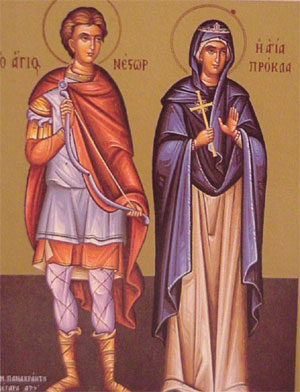I know we are supposed to be in conversation here — but sometimes it is hard to resist the pull of the tangential, the whispered aside, the minor character, the unsettling dream that seems to come out of nowhere and color the whole day.

Easter is huge in Greece — much more important than Christmas — and everyone here is gearing up for Holy Week. For Palm Sunday, though, we went to the Anglican Church, St. Paul's. I suppose I want my children to hear some of the liturgy, the words and the hymns, I did growing up. Like Rigoberto, I was obsessed with death as a child, and church seemed to be the only place it was openly mentioned.
I am more enamored with doubt than with belief, but something always draws me back to the church of my childhood. And I feel that, even as we struggle to keep our wiggling children relatively undisruptive in the pew, there is a space there for attention, for listening.
Today as we listened to the Passion according to Matthew, I was struck anew with the scene where Pilate is about to pass sentence and wash his hands of the matter (here in the King James):
19 When he was set down on the judgment seat, his wife sent unto him, saying, Have thou nothing to do with that just man: for I have suffered many things this day in a dream because of him.
What is it that is so fascinating about this minor character (and historical figure), this tangential moment (inconsequential to the action, and yet which suggests a whole alternate narrative), this tantalizing dream? Somehow that she is a woman, in the shadowy wings of the drama, increases the fascination, at least to me.
Naturally, the Wife of Pilate has attracted numerous writers and poets over the centuries. I must say that I wasn't previously familiar with this poem by Charlotte Brontë, but I was grateful for this opportunity to stumble upon it:
"Pilate's Wife's Dream"
Claudia Procula is revered as a saint in the Eastern Churches.
A.E. (Alicia) Stallings is the Oxford Professor of Poetry. She grew up in Decatur, Georgia, and studied...
Read Full Biography

